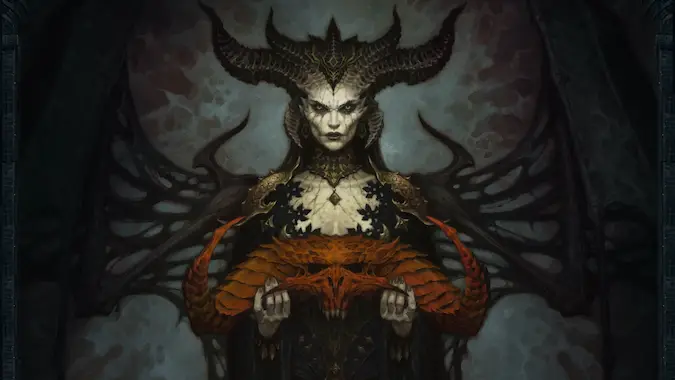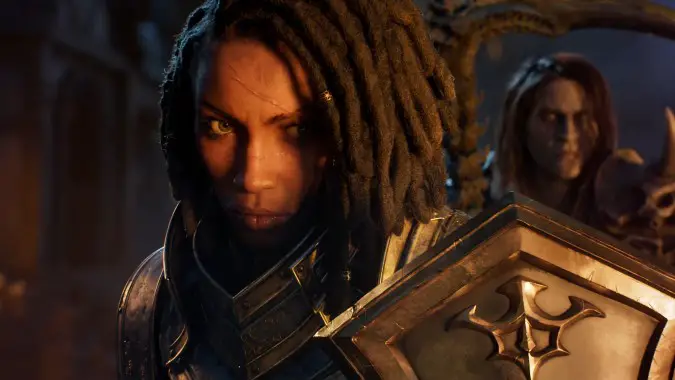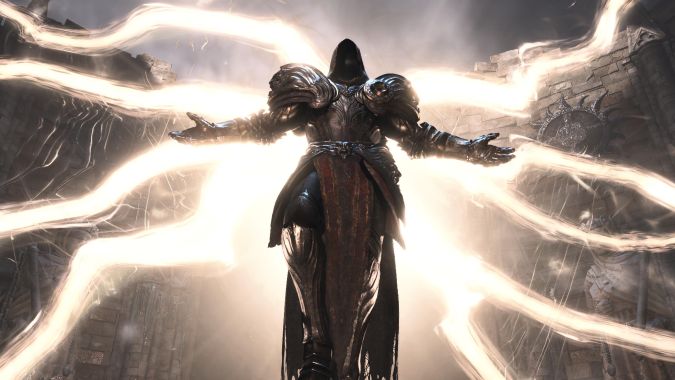What’s the difference between Diablo 3 and Diablo 4?

While each game in the Diablo franchise builds on the last, none of them quite replace each other. People were still playing Diablo 2 when Diablo 3 came out, and people continued to play Diablo 2 right up until Diablo 2: Resurrected was released. And now, shortly before Diablo 4‘s release date on June 6, Diablo 3 is at the height of its popularity, even though it was originally released in 2012. Both Diablo 2’s Ladder Seasons and Diablo 3’s Seasons have kept players engaged, after all these years.
Since its brief open beta, Diablo 4 has been compared to Diablo 3, not always favorably. Is Diablo 4 basically just a Diablo 3 expansion, with similar gameplay? And do we really need a new Diablo title when Diablo 2 and Diablo 3 continue to hold our interest?
I say yes. Having played both Diablo 3 and Diablo 4, I definitely see a reason to play Diablo 4. Despite similarities to Diablo 3, D4 is a game of its own, and a very engaging game at that. So let’s talk about what Diablo 4 shares with Diablo 3, and how it continues the feel of the franchise while also being brand new.

Diablo 4 is a clear continuation of Diablo 3
These two games look very much alike, and if you’ve played Diablo 3, Diablo 4 will feel immediately familiar. But it’s been more than a decade since D3 was released and you can tell that D4 is the younger sibling, taking advantage of advances in technology. D4’s graphics are sharper, the new in-game cutscene technology is really working for me, and the world of Sanctuary presented in more detail than ever before. But it’s an improvement, not a radical redesign of the Diablo format: Diablo 4 retains the visual hallmarks of the series, with a 3d isometric perspective and a UI that’s instantly recognizable.
But what about the color palette? Some players felt that Diablo 3 was uncharacteristically colorful, and the marketing for Diablo 4 has portrayed it is a darker game that harkens back to earlier titles in the series. But visually speaking, I feel like the colors throughout out the franchise have been more of a continuum — Diablo 3 didn’t seem nearly as bright as people portrayed it as, and Diablo 4 doesn’t seem nearly as dark. (In fact, I’ve now seen people complaining that it’s too dark, and needs to be more colorful.) But while D3 is a little brighter and D4 is a little darker, both of them still look like Diablo games.
The two games also share a lot where classes are concerned: two classes, the Barbarian and the Necromancer, come directly from Diablo 3, and if you played them before they play very similarly in Diablo 4. Even classes that weren’t directly lifted from Diablo 3 — like the Sorcerer and Rogue, which come from earlier Diablo titles — can feel very similar to classes you may be used to from Diablo 3. The D4 Sorcerer shares many features of the D3 Wizard, and the D4 Rogue can be specced to play very much like a D3 Demon Hunter. If you enjoyed playing a certain class in Diablo 3, you’ll find similar gameplay in one of the Diablo 4 classes. There are no drastic changes here: D4 takes D3’s classes and adds more depth and customization.
Some of the endgame systems carry over from Diablo 3 to Diablo 4, most notably Paragon as a progression system past max level. Paragon is much more complicated in D4, but it shares the framework of the D3 version. Seasonal gameplay will also continue, though D4’s seasons will be more expansive, introducing new zones and content as well as new gameplay mechanics. Some systems in Diablo 4 have new names, but are the same (or very similar) to systems in Diablo 3: Blacksmiths, Jewelers, and Occultists in D4 are pretty much just the Blacksmith, the Jewelcrafter, and the Mystic from D3 — though they have some new, expanded options.
We’ve only had the chance to play Diablo 4 up to level 25 (out of 100), so there’s still a lot we don’t know about Diablo 4’s endgame — but for now, endgame systems appear follow the basic model set up in Diablo 3.

Diablo 4 is also its own game, with a totally new feel
Despite the similarities, Diablo 4 is still its own game, and you’ll know it from the moment you jump in. Diablo 4 is full of stories and in-game cinematics to tell them; it presents the world of Sanctuary at a scale we’ve never seen before; and gameplay itself is paced significantly differently. There’s no mistaking these games.
Gameplay in Diablo 3 is almost hyperkinetic, focusing on smashing and blasting and shooting and stabbing and exploding as many demons as possible. The gameplay in Diablo 4, at least up to level 25, is less about hurling yourself into endless waves of enemies and more about managing your resources and the means at your disposal to avoid or survive damage in order to keep killing demons. Particularly when fighting various bosses, elites, and world bosses, a big part of Diablo 4 is about making a strategy for how to deal with encounters. Improving your gameplay in Diablo 3 basically meant collecting the right gear and finding the right spec that let you do the most damage and overwhelm your opponents — in Diablo 4, you have to think about how you approach the fight. Diablo 4 is still pretty fast-paced, but it’s dialed down on the manic speed of Diablo 3.
Changes to skill progression also give gameplay a very different feel. Skills in Diablo 4 offer more choices, with an expansive skill tree of active abilities, modifications and power-ups for those abilities, and passive power boosts. Compared to the Diablo 3 system where you picked from a selection of active abilities and then applied a single modifier, Diablo 4’s skill system offers much more depth. That also means it’s more challenging to figure out — and the Paragon system, with its multi-layered “tiles” of options, will make progression even more complicated. However, the rewards for learning the system are worth it, as you’ll be able to fine-tune your character to play just the way you want. Again, this lends itself towards slightly slower, more thoughtful gameplay than we had in Diablo 3.
But multiplayer may be the game’s biggest change. Diablo 3 is an always online game, but it’s easy to play completely alone — and if you do participate in multiplayer, the maximum party size is four people. But Diablo 4 takes place in a shared world, where you’ll run into other players as you explore Sanctuary. In my time just in the open beta I saw and interacted with many other players, fighting world bosses together, helping them with world events, and even just dropping what I was doing to help them kill a pack of monsters. While you can certainly play Diablo 4 mostly solo — even the game’s dungeons and strongholds can be soloed — there’s no illusion of this being a single-player game, and the world bosses are so powerful that you’ll have to team up with others. It’s a massive change that turns Diablo 4 into a quasi-MMORPG.
Having this sort of shared multiplayer world also opens the game up to new features, like world PVP. We didn’t see PVP in action in the beta, so it’s a little hard to say how it will work in Diablo 4. It sounds like PVP will be based around fighting over special resources and doing battle on the Fields of Hatred. These regions, corrupted by the presence of Lilith on Sanctuary, are new to D4, and offer an entirely new type of gameplay.
And finally, the scale of Diablo 4 is massive. Just playing from level 1 to 25 in Diablo 4 we explored a zone that was as large as Diablo 3’s Act 1 and 2 combined. Sanctuary comes to life in a way it never has before in these huge zones with detailed environments and environmental storytelling. Exploration is part of Diablo 4 in a way it just hasn’t been before.
And the story is just as expansive: the world is packed with side quests that flesh out the world. Dungeons, cellars, and caves all teems with repeatable content and quests that don’t really affect the main story but which do a fantastic job of highlighting the state Sanctuary is in, the stakes of the fight with Lilith, and how much the people of Sanctuary have lost over the past three games. From watching a woman grieve over her husband’s grave to digging up a magical axe only for it to corrupt the person we give it to, Sanctuary is a demon-haunted land reeling from the apocalyptic events at the heart of Diablo 3. We get to see all of that first hand.
The story of Diablo 4 is where the real darkness of the game comes from, not its graphics or color palette. D4 is much more grim than D3, though it manages to hit that tone without becoming pointlessly grimdark for grimdark’s sake. When the game is dark, it’s dark in the service of the story, which is a more somber, more reflective, and more tragic tale than any Diablo game to date.
Make no mistake — you will not feel like you’re playing some brand new game series when you play Diablo 4. You can clearly see the connective tissue between the D3 and D4, but you’ll never feel like you’re playing a Diablo 3 expansion in disguise.
Diablo 4 is a whole new game, and it shows. Frankly, as much as I love Diablo 3, I believe Diablo 4 will be considered the best game in the series by many people and I’m definitely one of them.
Please consider supporting our Patreon!
Join the Discussion
Blizzard Watch is a safe space for all readers. By leaving comments on this site you agree to follow our commenting and community guidelines.
 @MatthewWRossi
@MatthewWRossi




